Buying an acoustic piano can feel like an overwhelming process, but it doesn’t need to be! Whether you have a fair bit of experience with pianos or are a total beginner, you’re looking to make the right musical choice for you. With countless brands, types, models, finishes, price points and features out there, it’s understandable to feel a little intimidated first stepping into a piano showroom. But by keeping an open mind and with a proper bit of research ahead of time, shopping for a piano can (and should!) be an exciting and thoroughly positive experience!
I’ve designed this guide to be an informational jumping off point in your search for a piano — everything covered here are among the most common questions, concerns, and considerations I’ve heard from first time piano buyers. You may be just starting out on piano for the first time or already an advanced player, there’s still many considerations involved in buying a piano that will be new to you. As someone who studied piano at the collegiate level, I can confidently tell you that many, if not most, advanced pianists still have much to learn about the piano shopping process and may carry many assumptions and misconceptions about how to go about finding the right piano for them.
This guide is intended to arm you with the right background information and get you in the right mindset to confidently shop for your piano. If this guide leaves you with further questions, please reach out to me at [email protected]! At the end of the day, the right piano for you will be the one you enjoy playing the most and will inspire you to put in the many hours of practice to achieve your musical dreams!
Beginning the Process
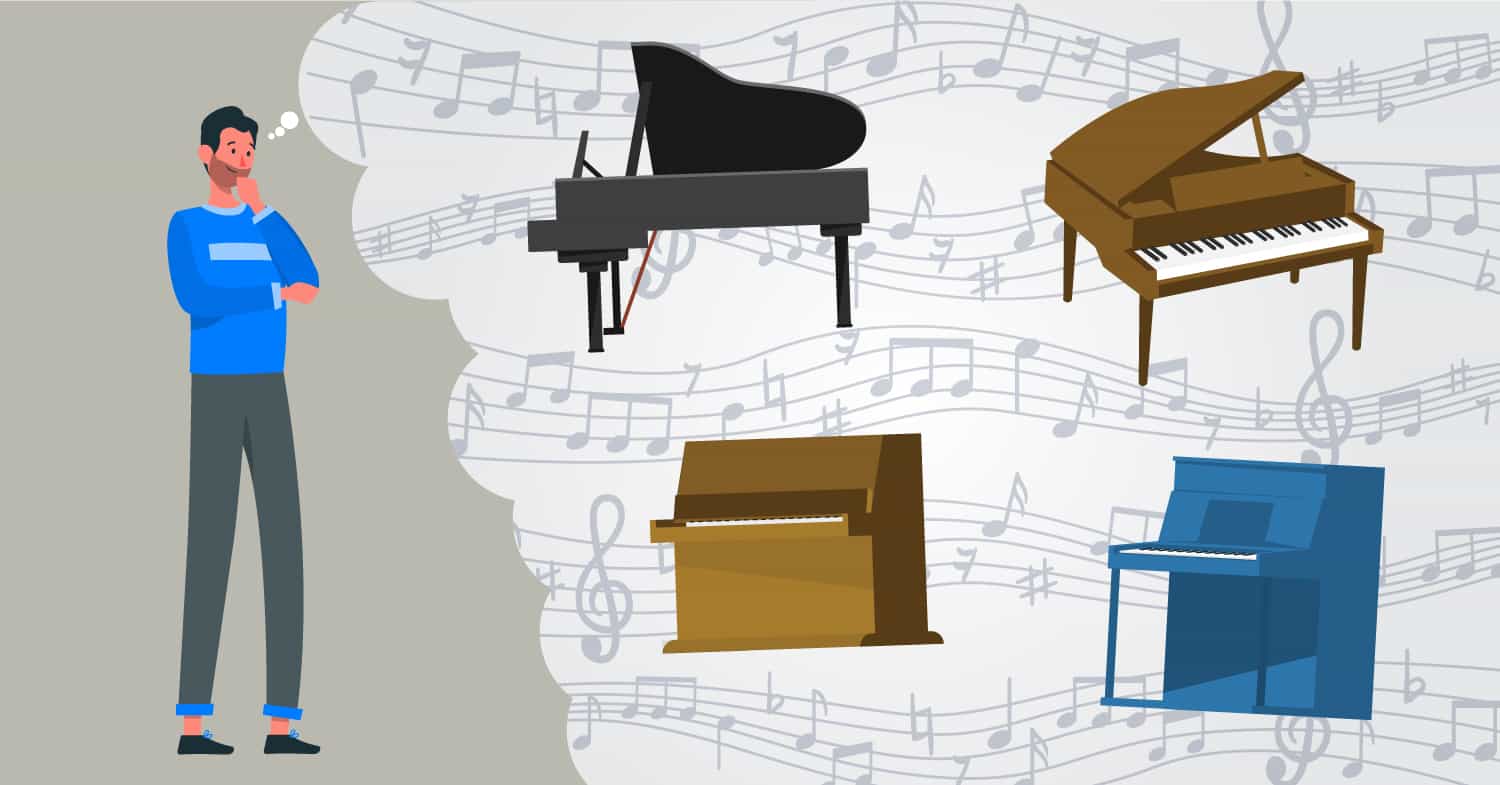
Start with a vision, but keep an open mind! When buying a piano, the decision is about you. Your likes, needs, and considerations are of utmost importance. To properly navigate the diverse world of pianos, it helps to start off by thinking of a few absolutely essential traits you’d like your piano to have (or not have!). Having a few important piano traits in mind will help guide and narrow down your piano search. Depending on your experience with pianos, this can be more or less specific and can give you a rough, general idea of what your perfect piano could be. Some of these considerations will be looked at in fuller detail later on in this guide, but here are some common ones starting from more basic to more experience-dependent:
- Grand vs. Upright (see below!)
- New vs. Used (see below!)
- Color/finish
- Size constraints
- Cabinet style (More modern or more traditional?)
- Key weighting (light, moderate, firm)
- Tone (Bright, warm, etc.)
It is helpful to begin the process with a basic idea of what you’re looking for, but keeping an open mind is very important! There are so many great pianos out there that there’s a good chance that your perfect piano might be different from what you originally had in mind. In fact, it’s quite often that people will enter a piano store with an idea in mind of what they’re looking for and end up falling in love with an entirely different piano. At the end of the day, the perfect piano for you is the one you enjoy playing on the most, so be ready to explore many options, understand your own musical needs better, learn more about the fascinating range of pianos available, and have fun!
New vs Used
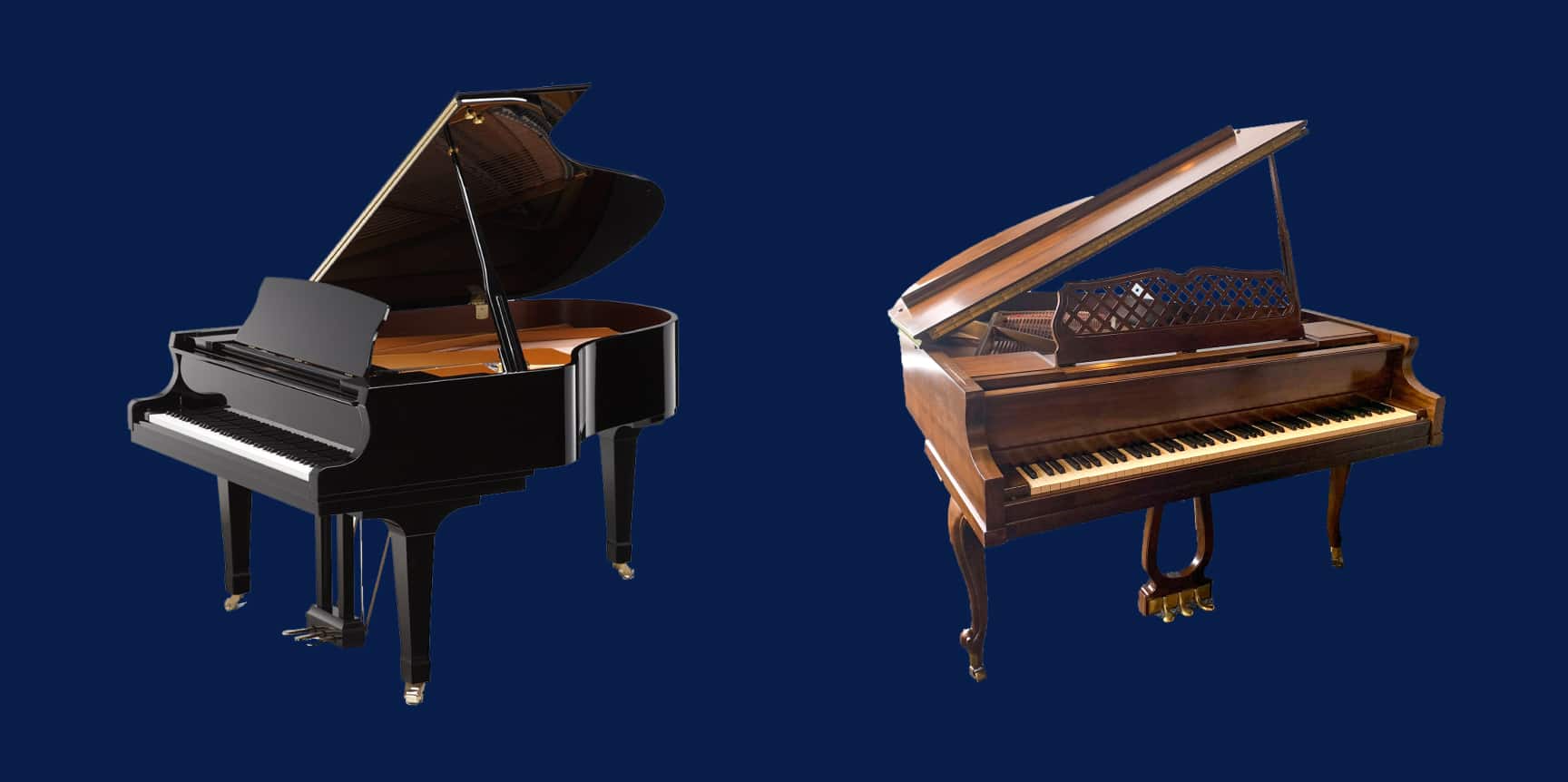
When shopping for a piano, you’ll certainly find many great options both new and used. Buying a piano is a long-term investment and there are definite advantages and disadvantages to either option. Understanding these differences will help determine what best suits your specific wants and needs:
New Piano Advantages
- Extensive manufacturer’s warranty, typically 10-15 years
- Much easier to research and compare current models online
- Take advantage of newest design innovations for improved sound and key feel
- More options for sleek, glossy, modern aesthetics
- Longer life expectancy, averaging 75-100 years
- First 10-30 years piano truly plays “like new” (See How Pianos Age)
- Lower cost to maintain
- Very low chance of defects, covered under warranty
- Maintain overall monetary and musical value for many more years
- Peace of mind
New Piano Disadvantages
- Higher upfront cost
- Less “uniqueness” in sound and key feel, which develops through the aging process
- Significant depreciation in first few years as it becomes used
- Limited options for more traditional looking finishes and cabinet styles
Shopping for used pianos can be a confusing experience. At Family Piano, we make shopping for pianos as stress-free, transparent, and enjoyable as possible. All of our used pianos have been extensively refurbished, priced very competitively and we actually like answering all your questions!
Used Piano Advantages
- Lower upfront costs
- Dealer Warranty, typically 3-5 years
- More variety of choice overall, many great brands and designs no longer in production
- More uniqueness and character in their sound quality
- Depreciation slows significantly after a piano’s first few years, can resell for closer to buying price
Used Piano Disadvantages
- Harder to research specific models/brands online
- Potential for hidden defects
- Higher maintenance costs
- Lower life expectancy
- More difficult to determine the condition of a used piano without expertise
Grand vs. Upright
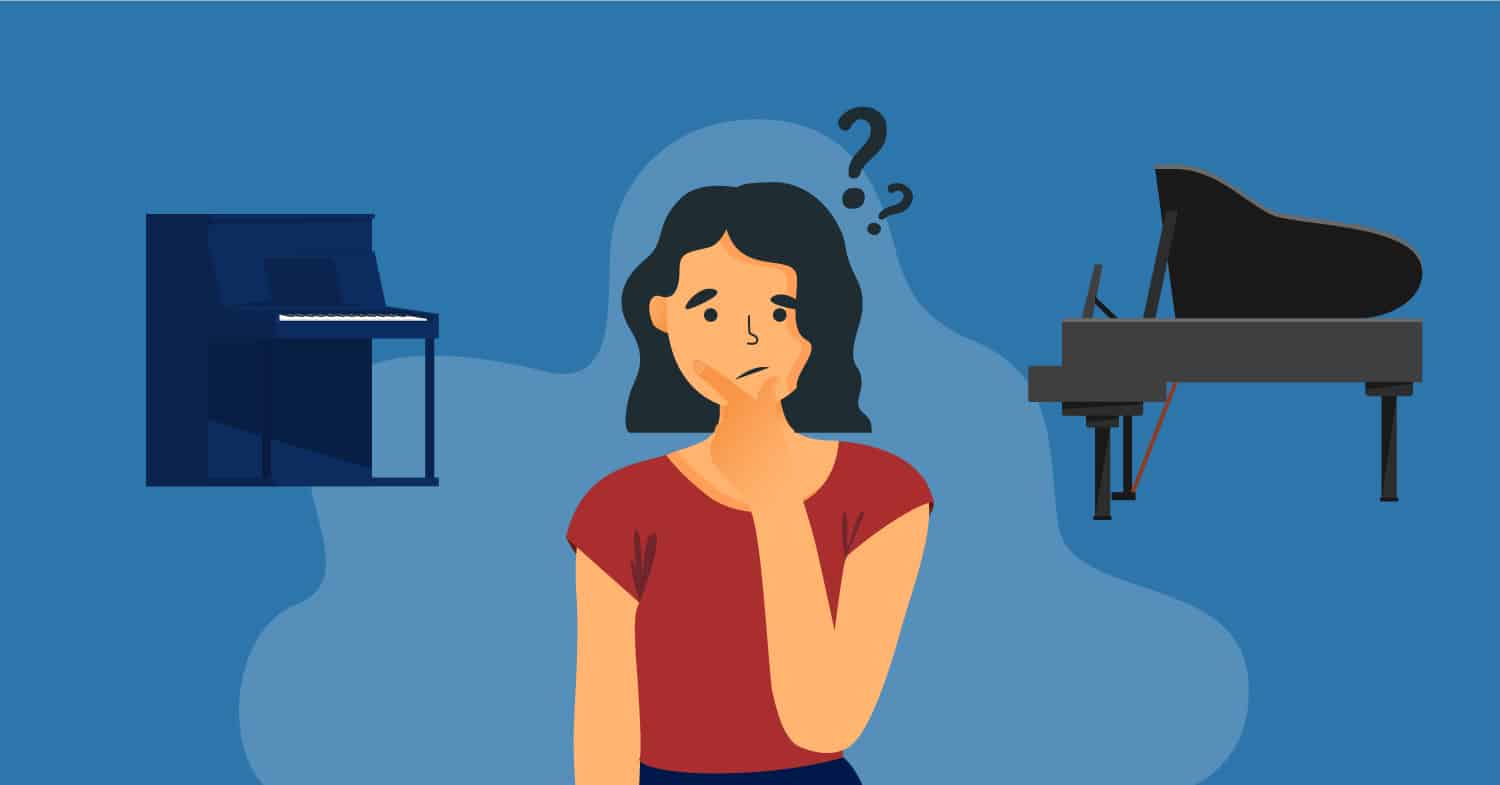
When considering whether to get a grand piano or upright piano, there’s quite a bit more to it than just the aesthetic consideration. One common misconception is the blanket statement “grands are better than uprights”, which is a gross oversimplification that is not helpful to the buying process. The simple truth is that both types of pianos operate differently internally, as well as project sound differently, creating distinct characteristics that favor different spaces, playing styles, and musical genres. Either style could be the better overall instrument for you!
Grand Piano Considerations
Grand pianos generally are more expensive and take up much more floor space than an upright piano, but offer a fuller, more substantial tone and a more richly perceptive playing experience. Grand piano strings are strung horizontally, which allows for a larger, more substantial action mechanism capable of more nuanced playing.
Grand Piano Advantages
- Fuller, richer sound
- More perceptive action that allows for higher expressivity and nuance
- Faster note repetition (Averaging 14 times a second vs. 7 for uprights)
- Better sound balance
- Wider dynamic range
- Substantially longer keysticks
- Best suited acoustically for larger spaces
- Sound is projected vertically, more directly encompassing the player and audience
Grand Piano Disadvantages
- More expensive
- Take up substantially more room space, with fuller sound as they get longer. Large grand piano in too small of space can be overpowering.
- Higher moving costs
Upright Piano Considerations
Upright pianos are more affordable, take up much less space (fuller sound at taller heights without more floor space occupied), and are more acoustically suited to small to mid-sized spaces. Coupled with these advantages, a high-tier upright piano can still offer a very high-quality playing experience that more than suits the vast majority of pianists’ needs.
Upright Piano Advantages
- More affordable
- Take up less floor space, approximately equal 2’ x 5’ dimensions for most models no matter height
- Lower moving costs, easier to move around within the home
- Suited best for smaller spaces where a grand piano might be overpowering
- Many newer models have muffler rails for quiet practicing, very uncommon on grands
- More aesthetic/design/features variety
Upright Piano Disadvantages
- Shorter keysticks and more compact action, making for a less perceptive keyboard overall
- Shallower dynamic range
- Slower note repetition (Averaging 7 notes per second vs. 14 for a grand piano)
- Sound projects horizontally through the soundboard, often less direct and encompassing
How Pianos Age
Pianos tend to live very long, musically-useful lifespans, typically offering 75-100 years of quality musical life when bought brand new.
Of course, there are many variables involved in how long a piano can last such as construction quality, materials quality, brand and model type, amount of playing piano receives, level of maintenance received throughout its life, where it was kept throughout its life, how many times it has been moved, etc.
This guide is meant to describe the typical aging process of a new piano that has not been rebuilt (which entails significant parts replaced, greatly extending a piano’s lifespan), but rather a piano that has been properly stored and maintained throughout its life with typical home usage.
0 – 10 Years Old
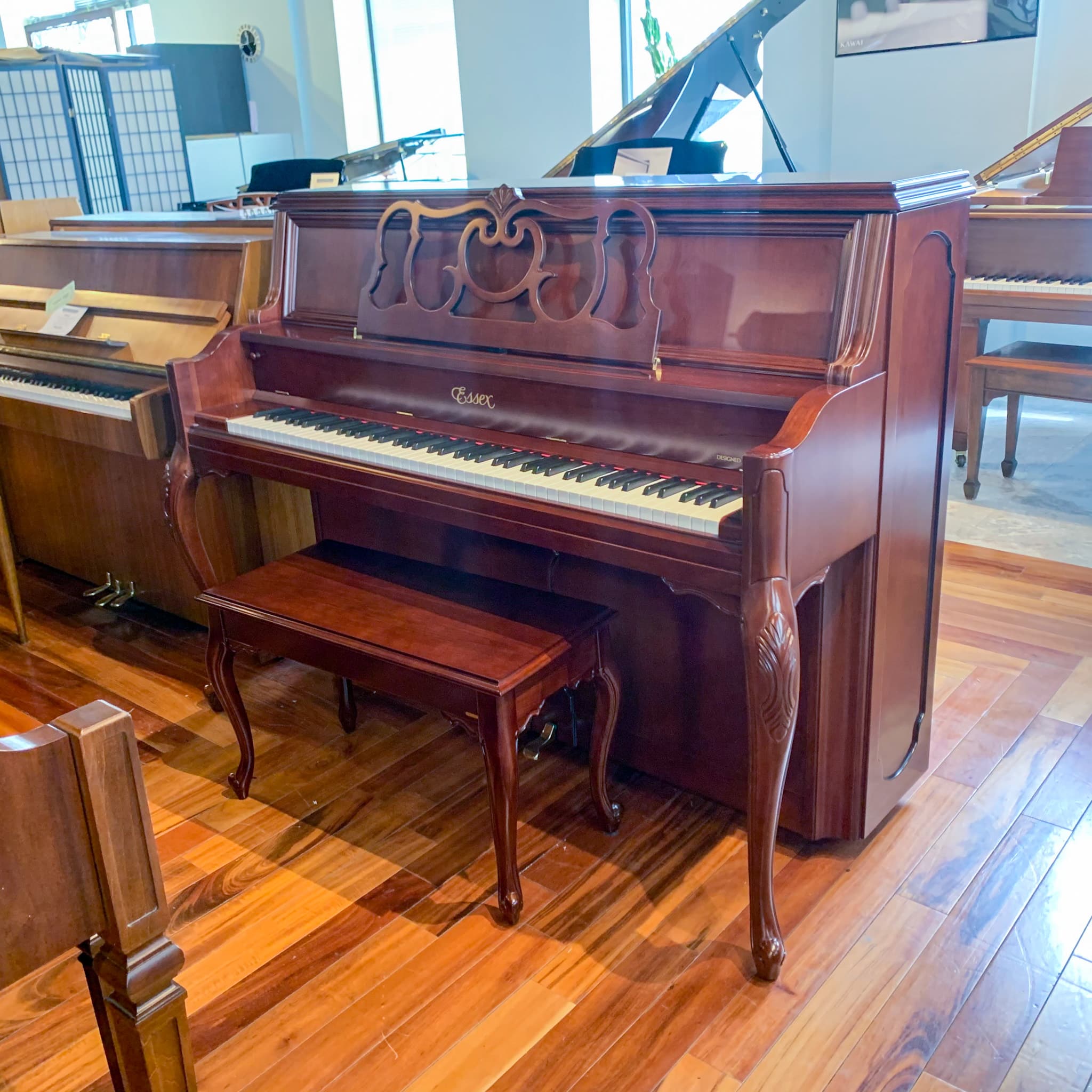
New pianos will change very little in their first ten years and will feel and sound brand new.
10 – 20 Years Old
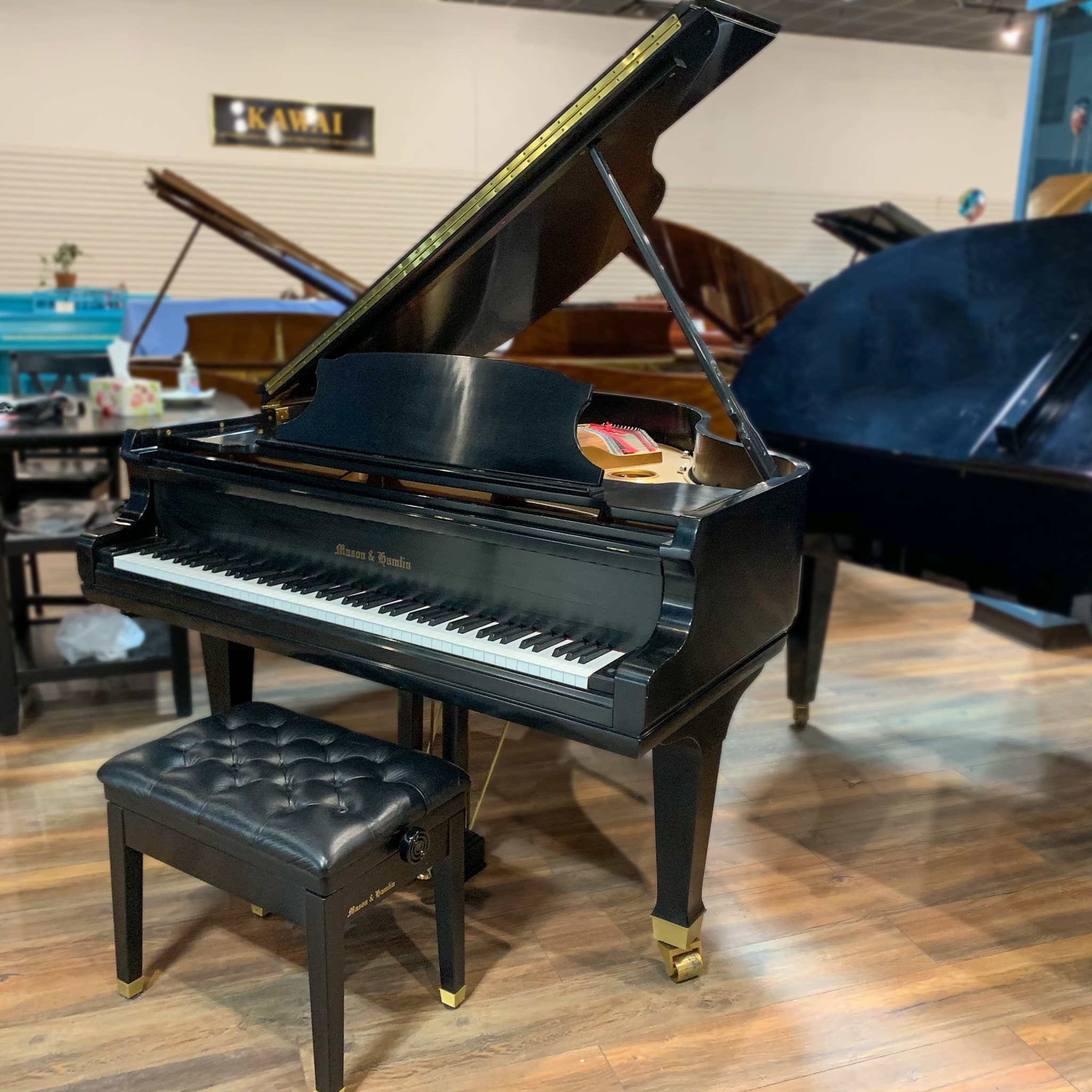
Depending on instrument quality and amount of usage received, these pianos may still feel and play like brand new or very slightly “broken in”.
20 – 40 Years Old

Higher quality instruments seeing moderate use (less than 2 hours a day) will feel lightly “broken in” around this age. Not worn by any means, but less concisely ‘tight’ as new pianos but still highly expressive.
Many pianists prefer the feel of pianos around this age as the crisp resistance of the brand new piano begins to feel nicely broken in and quite comfortable to play.
40 – 60 Years Old
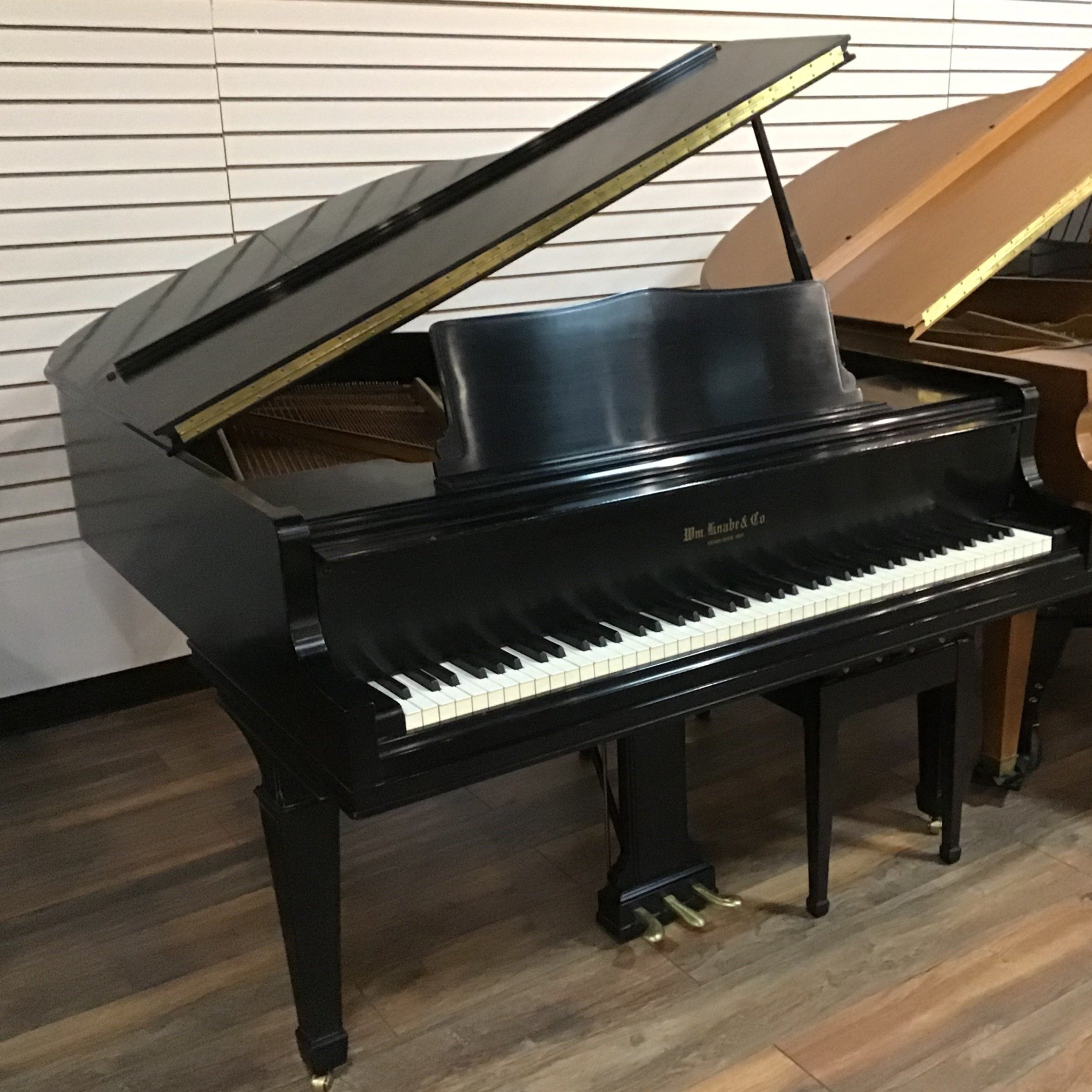
Higher quality instruments will feel properly “broken in” at this age. Amount of usage piano has experienced begins to make a major difference around this time with heavily used or lower quality instruments feeling comfortably worn with somewhat decreased expressive ability. Lightly used higher quality instruments will feel more like 20-40 years old around this age. String oxidation will begin to take effect around this age, slowly brightening and thinning the sound quality, though not yet to a significant degree. Replacement of strings or hammers is recommended around this age to keep the piano sounding almost like new.
60 – 80 Years Old
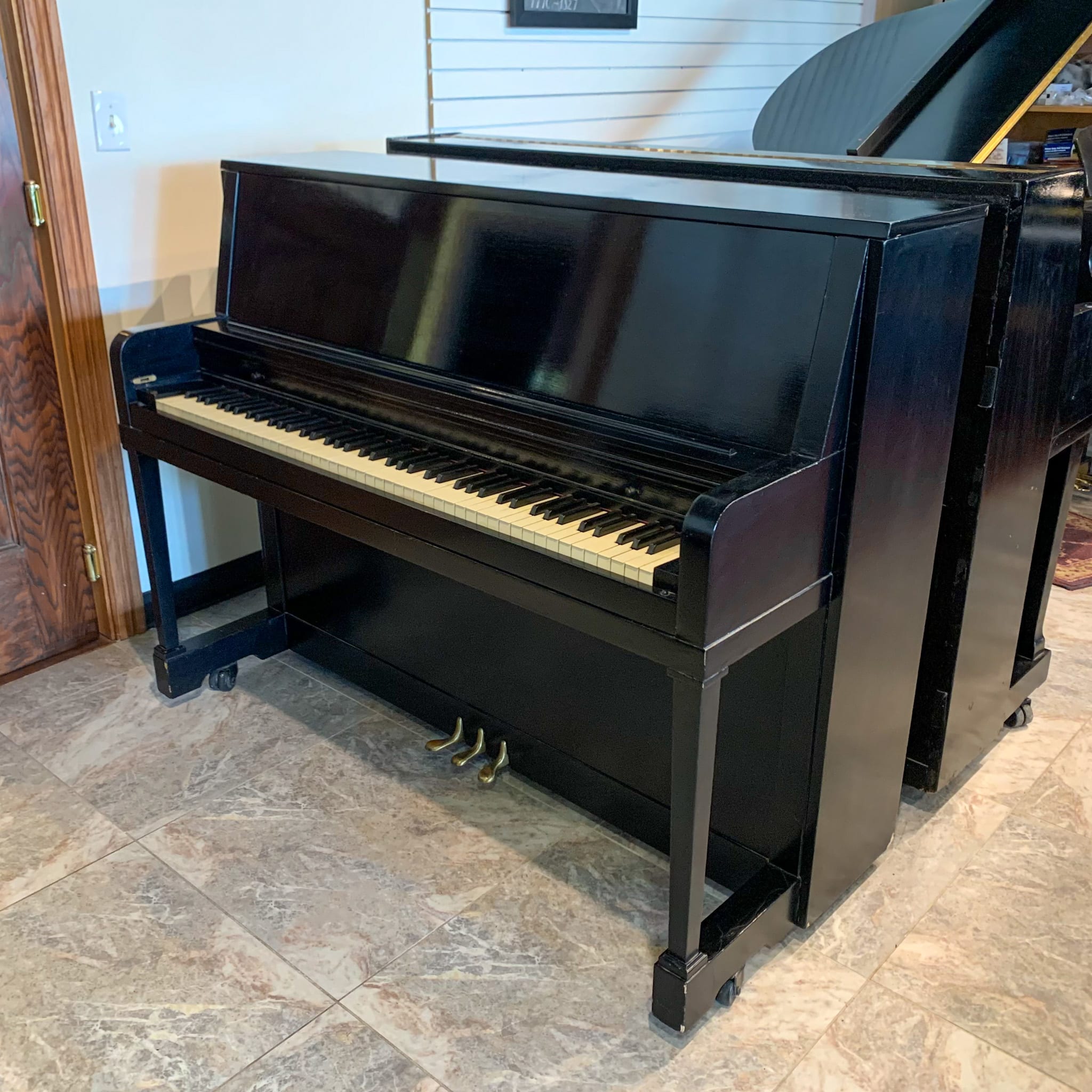
Lower quality unrefurbished pianos will feel the effects of wear as the keys “loosen up” and finer musical details and expressions become more difficult to achieve. If strings have not been replaced, the cumulative string oxidation around this age will be definitely noticeable, typically resulting in thinner, brighter sound qualities. Higher quality instruments this age receiving proper maintenance and moderate usage may feel and sound more like 40-60-year-old pianos.
100 – 125 Years Old
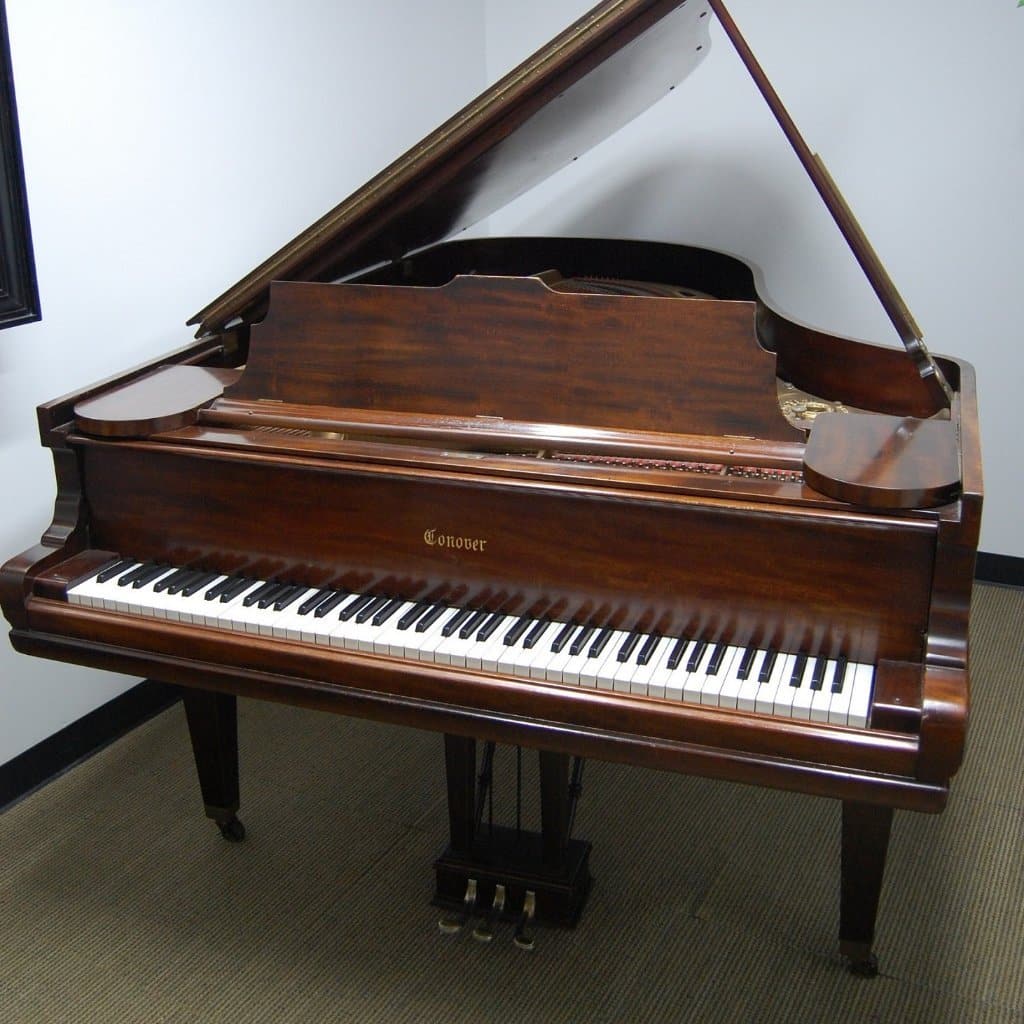
Higher quality instruments that have been well maintained with only essential parts replaced as needed will be approaching the end of their quality musical life around this age, though may still be appropriate for beginners to intermediate players for a while longer. Well-restored or rebuilt pianos may have many more decades of quality playing left ahead of them at this point!
Closer Considerations for a Piano
You’ve done some research and now know in at least general terms what sort of piano you’d like to have and are ready to go piano shopping!
Whether you’re a total beginner or an experienced player, if you’re a first-time piano buyer it’s likely your first time closely examining and deciding whether or not a piano is the right musical match for you.
Once you’ve found a few options you’d like to seriously consider, you can use these tips to assess and compare your top piano choices, from no piano experience required to more skilled techniques.
Sound
With every acoustic piano made of over 12,000 separate mostly organic material parts, each piano will have a unique sound.
There are many adjectives used to describe the sounds of a piano, but generally, these sound descriptions are aligned according to two main descriptors: bright or warm. Bright sounds are focused and very clear. Warm sounds are wider, richer, and more expansive.
Deciding whether you like a warmer or brighter tone will help inform your choice of a piano.
Whether it’s you playing or your salesperson, closely analyze the sound quality coming from the piano and ask yourself if you like this sound compared to other pianos.
Ask your salesperson how they would describe the sound and if you really like one specific piano’s sound, ask if there are other pianos that have a similar sound quality to compare.
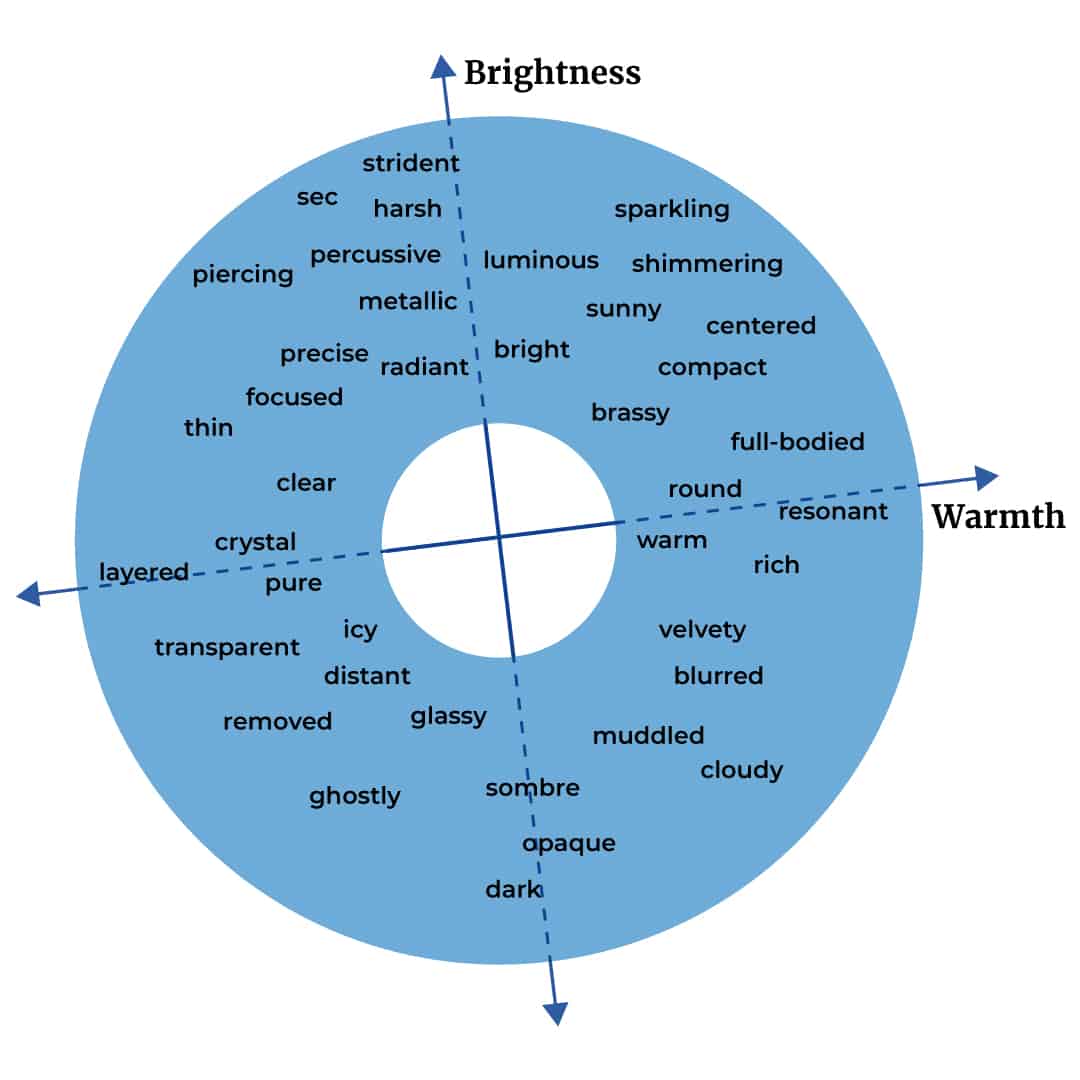
Key Weighting
With every acoustic piano being unique, you’ll find a large range of different key weightings, which describes how much resistance the keys have to be pressed down.
This resistance is a good thing as it trains your muscles and tendons to play with proper technique, but too much can make it hard to play accurately at fast tempos while too little can impact your level of overall musical control.
Key weighting can be described as lightweight, moderate, or firm. Upright pianos are generally going to be a touch more lightweight than grand pianos due to their smaller actions.
Beginners generally are best served by a lightweight to moderately lightweight action, as it will allow for proper technique development without making for a frustrating, tiring experience.
More experienced players generally will have their own key weight preference in alignment with their preferred playing styles and should play both technical exercises like scales and contrasting musical pieces extensively on their top choices and compare which key weighting they prefer the most.
Volume and Dynamic Range
A piano’s overall volume and dynamic range come primarily from the string length of the instrument as well as from the action mechanisms.
Beginner players should look for pianos with a pleasant to the ears amount of volume when played at a moderate dynamic. Beginners generally will need time to develop their dynamic capabilities, so the quality and volume of sound in the middle of the dynamic range will be most important to them.
More advanced players should play quiet and loud sections of music and analyze the ease and controllability of the piano at each dynamic range, this reveals how perceptive a piano’s action is to small nuances of touch.
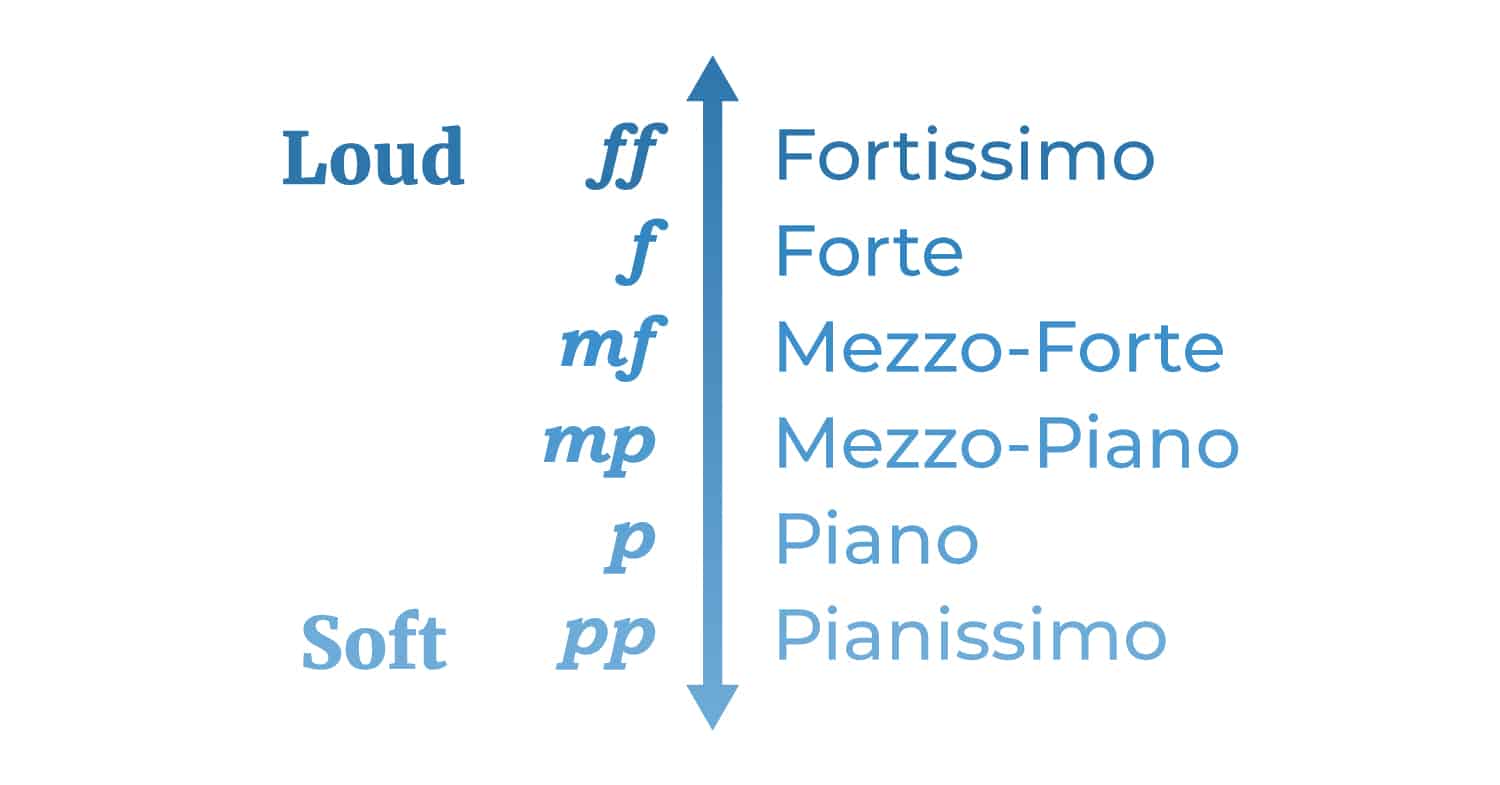
Lower, Middle, and Upper Ranges of the Keyboard
Closely examining these three main areas of the keyboard and how they interact with each other can reveal a lot about the musical merits of a piano and makes for an easy way to compare your top piano choices.
Lower Range
Play the notes of the lowest two octaves of the pianos carefully listening for strength/resonance of the bass range. Clarity and resonant power in the bass range are important musical indicators as to the overall quality of the piano. Especially the lowest few notes, play them and listen whether they are relatively clear and easy to distinguish, or more “tubby” and blur together into a deep rumble.
Mid-Range
Generally referring to notes an octave below and above Middle C on the piano. This is where the majority of your melodies are going to be played. A strong, singing quality is ideal here with these notes being clear enough to stand above your left hand harmonies. Beginners should listen to their salesperson demo the piano and listen for how clear the melody lines stand out from the chords below them. More advanced players should feel specifically how easy it is to make the melody sound distinctly present from the lower harmonies in their playing.
Upper Range
Often forgotten are the importance of the highest notes on the keyboard. Though more rarely played, the tonal strength of these notes are highly revealing about the overall musical condition of the piano. The more ‘musical life’ these notes contain, generally the better constructed the piano is.
Just like with humans, the lower and higher extremes of sound are the first to weaken in a piano as they age. Listening for tone and clarity in these extremes suggests the effects of aging on a certain piano and hints at the initial quality of the piano.
Piano Pricing & How We Price Pianos
Piano prices can be more than a bit confusing at first glance, especially when comparing prices between dealerships and among private sellers. There are many variables that go into properly pricing a piano including age, condition, size, model, accessories, brand, and performance quality.
Here at Family Piano Co, we firmly believe in eliminating pricing confusion. All of our pianos are clearly priced, refurbished, include a 3- or 5-year warranty, a free in-home tuning and our 100% “double-double” trade-up policy.
Refurbished Upright Price Levels

Starter-Level Uprights $1500-$2500
These entry-level upright pianos have been extensively worked on and perform at their best possible level. Perfect for students or adult beginners to intermediate level players.

Mid-Level Uprights $2500-$4500
These pianos are from highly reputable brands and play to a high standard, perfect for intermediate to advanced players.
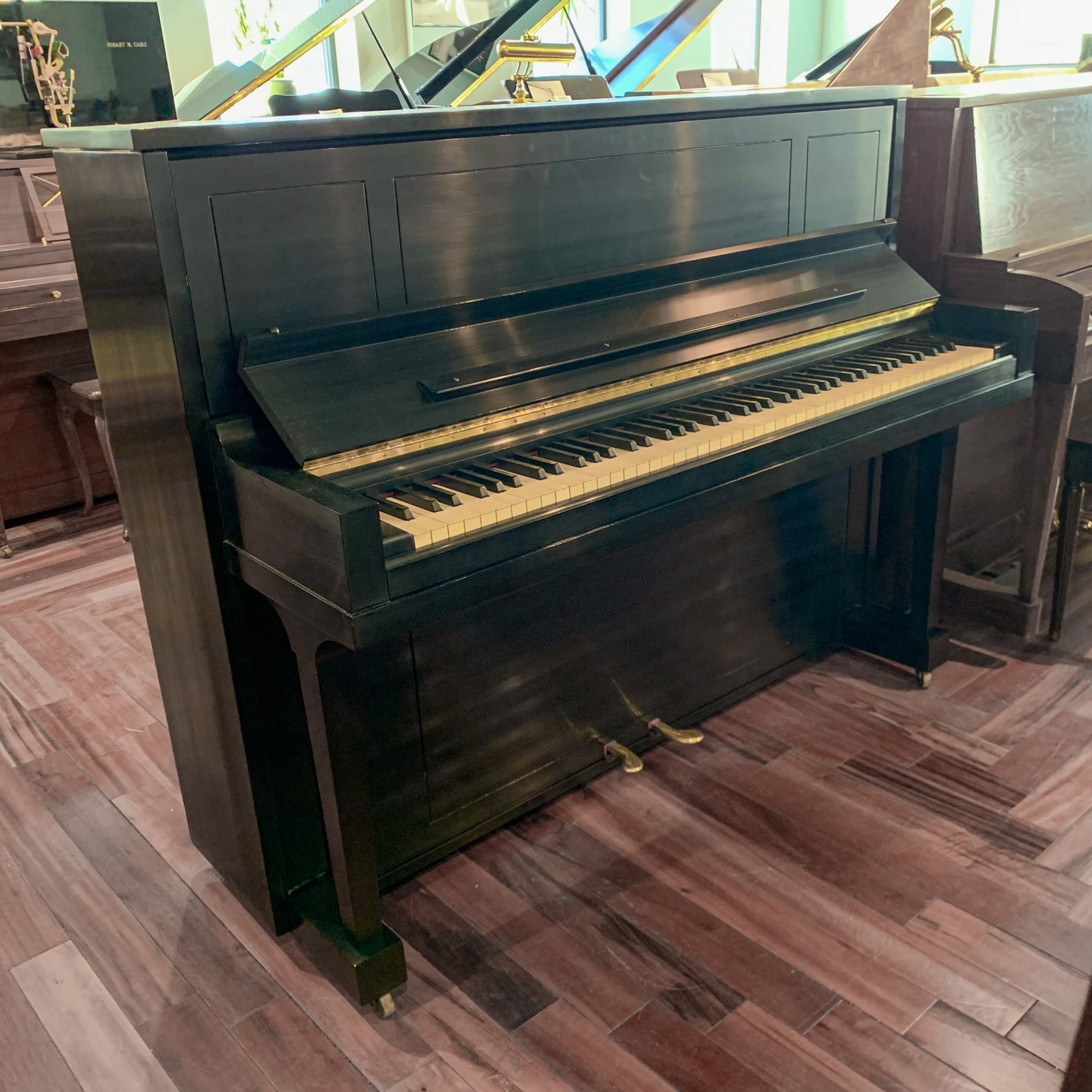
Upper-Level Uprights $4500+
These pianos are newer pianos from top-level brands in great condition, perfect for serious students, advanced players, and anyone looking for a top-notch playing experience.
Refurbished Grand Price Levels
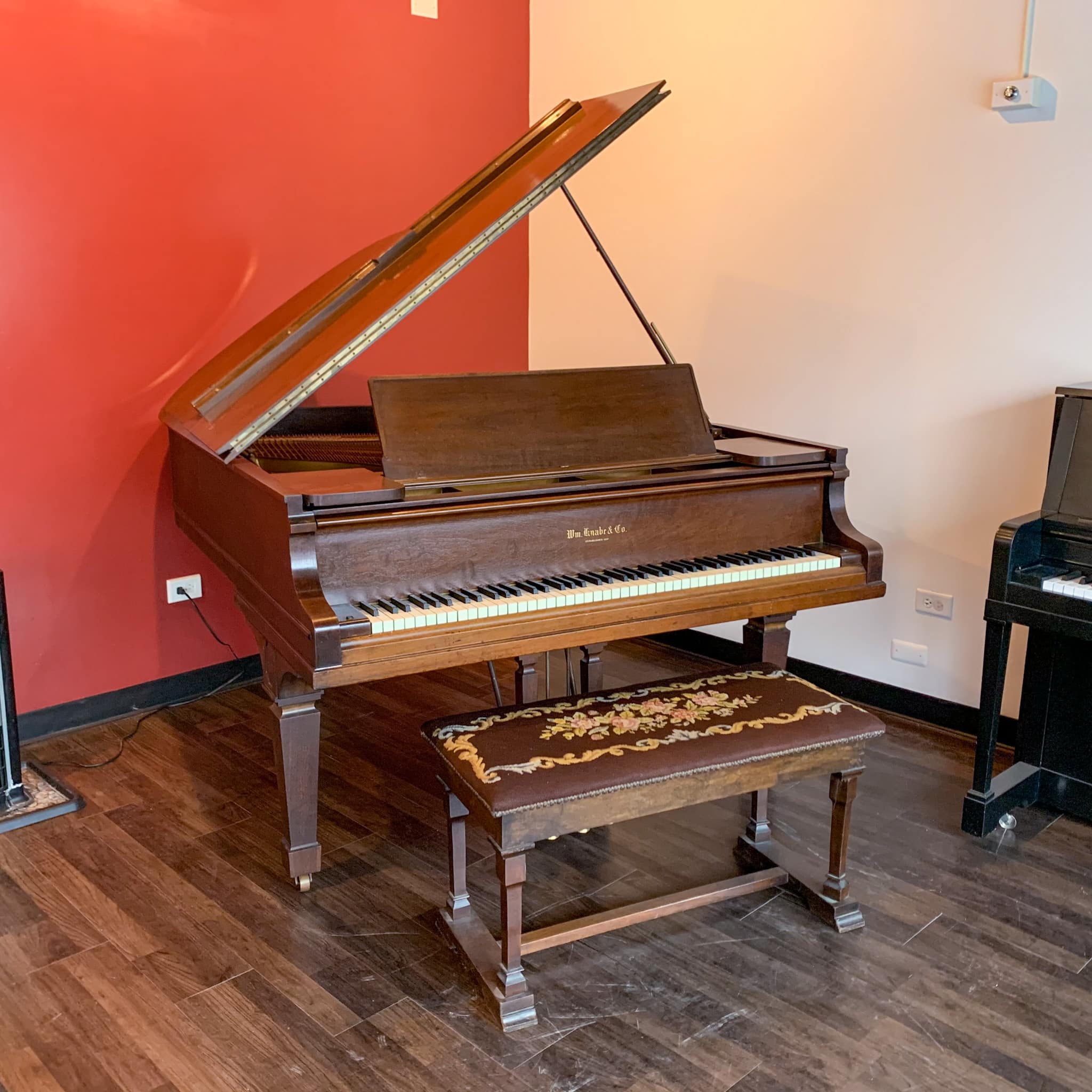
Starter-Level Grands $3,500-$5,500
These entry-level grands are older, generally smaller instruments in great playing condition, making for a wonderful, affordable option for beginner to intermediate players.
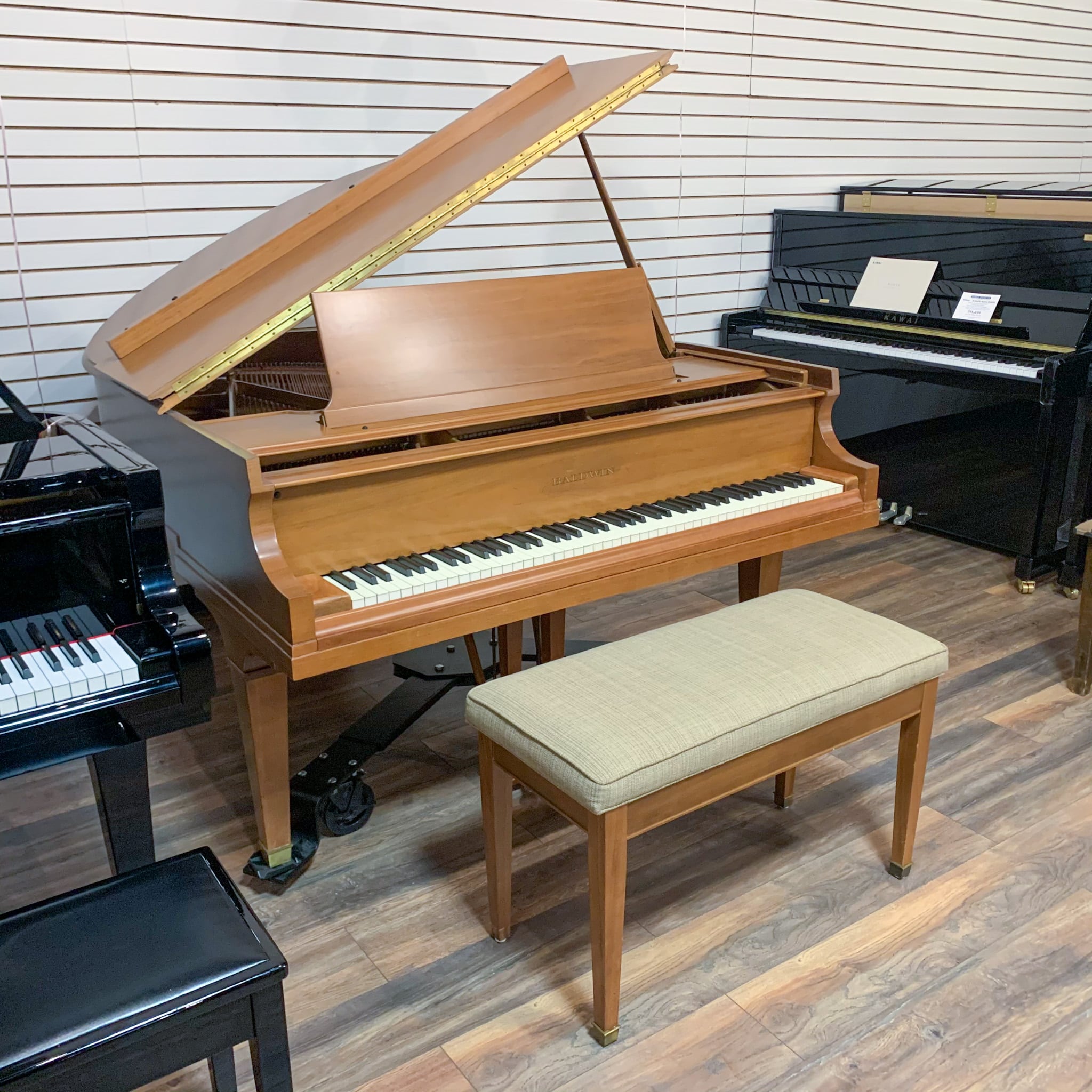
Mid-Level Grands $5,500-$10,000
These grands are from highly reputable brands, generally mid-sized and both look and play to a high standard. Perfect for intermediate to advanced players.

Upper-Level Grands $10,000+
These grands are mid-sized to large and from top-level brands. They play at very high standards perfect for serious musicians who want a top-level playing experience.
Why Kawai Acoustics

Kawai’s use of ABS Carbon Fiber in their piano actions makes for a more durable instrument with a uniquely perceptive touch that will remain feeling new for many more years!
Kawai pianos have a long, illustrious history going back to 1927. Founded in Hamamatsu, Japan, the very same founding city as Yamaha, Kawai benefitted from a wealth of institutional knowledge on the art of fine piano manufacturing.
Today, Kawai pianos are at the forefront of piano technological innovation and have a perpetually forward-thinking company culture. As such, Kawai pianos are highly advanced, musically excellent instruments widely considered a global top brand all while managing to keep prices significantly below other global top piano brands!
Kawai pianos tend towards warm, velvety, highly lyrical sound palettes with a rich tonal character. Although the sound quality of Kawai pianos is highly excellent, the mechanical action of Kawai pianos is where the greatest innovations lie.
The use of ABS carbon fiber in Kawai actions resulted in one of the most highly advanced piano actions available today, their highly esteemed Millenium III action. ABS-carbon does not expand or contract with fluctuations in heat and humidity and is lighter-weight than wood while also acting as a more efficient medium for the transfer of kinetic energy.
In short, Kawai actions with ABS-carbon are highly durable and extremely perceptive, creating pianos with a uniquely refined sense of touch and lower maintenance costs, all while beating other top-level brands quite significantly in price.
In fact, entry-level brand new Kawai uprights are priced at used upright levels, making for an extraordinarily affordable option for a brand new, top brand piano experience!
What’s Wrong With a Free Piano?
In the internet age, a quick search reveals many pianos being offered for ‘free’, and at first glance, finding a ‘free’ piano that looks nice and rounding up a few friends to lift it into your truck and take home seems like a tempting option. The reality is, however, going for a ‘free’ piano runs a very high risk of ending up with a subpar instrument that requires costly repairs and maintenance work to get it up to an acceptable playing standard or worse, ending up with an unrepairable, untunable piano that you will need to dispose of.
Most pianos being offered for free online are older, lower quality pianos with little to no market value and likely have not been properly stored, maintained, or even tuned for many years. With over 12,000 individual parts in an acoustic piano that must be in good shape and in proper alignment for a decent playing experience, it is highly likely a ‘free’ piano will require hundreds of dollars worth of technician work to be brought to an acceptable playing standard, assuming the piano is even in a repairable state (which would be very difficult to impossible for anyone without a lot of technical knowledge about pianos to discern). Even with this work completed, there remains a high probability of expensive future repairs as the piano acclimates to a change of environment and receives regular use that it probably hasn’t seen in many years.
Here’s a breakdown of the hidden costs for an average ‘free’ piano:
Moving
While you may be considering picking up the piano yourself, this too runs a high risk of injury to yourself, friends, and to the piano. Most free pianos are in a fragile state and an unprofessional move can easily cause more damage in repairs than the cost of a professional move. Your best option is paying for a professional move, costing approximately $200-300.
Tuning
Your ‘free’ piano most likely has not been regularly tuned in a long time. Assuming it is still capable of holding a tune (which you would not know until a technician has attempted to tune it), you’re not just looking at a single standard tuning. An older upright that has not seen regular tuning in years and has just been moved into a new home will require 3-4 tunings in just the first year to regain the ability to hold its tune, costing approximately $500 depending on local tuning rates.
Repairs
Your “free” piano will almost certainly be in need of regulation, essentially re-aligning those 12,000 mostly wooden parts in order to play consistently. There’s a good chance several or more parts will need to be replaced. Depending on what needs to be replaced/repaired, these costs could easily stretch from several hundred dollars of repair labor to potentially thousands if substantial parts replacements are required.
Overall: It’s What’s on the Inside. . .
At the end of the day with all this work completed, you’re most likely still left with a lower-quality instrument that remains highly liable to break down again within a few years. This is not to say that a ‘free’ piano is never worth it, but rather that your odds of finding a truly worthwhile ‘free’ piano is much more like finding a needle in a haystack.

Although a free piano may look good from the outside, many may not have been opened up and professionally examined in decades if ever. The quality, integrity, and alignment of these internal parts decide the sound your piano produces, how well it plays, and the likelihood of expensive future repairs becoming necessary.
Maintaining a Piano
Maintaining your new piano properly will ensure it sounds, plays, and looks as good as possible throughout its long lifespan while maintaining its market value for many years to come. Piano maintenance can seem like an intimidating prospect but the good news is that pianos are built to be very hearty, durable instruments that will keep up very well in modern homes!
An acoustic piano is a remarkably complex instrument consisting of over 12,000 parts, many of which are organic materials such as wood, felt, cloth, and wool. This means that there are a few important considerations to keep in mind such as room placement, temperature and humidity levels. Following these important considerations will help cut down on overall maintenance costs from tunings and repairs and lengthen your piano’s prime musical lifespan!
Temperature and Humidity
The ideal environment for your piano is temperatures around 68˚F, or standard room temperature, and humidity is most favorable at around 40%. The most important thing is to avoid sudden, major fluctuations in humidity and room temperature. During the dry winter months, a good-quality room humidifier can go a far way in preserving your piano. If proper humidity control is impossible in the space you intend on keeping your piano, a Dampp-Chaser Piano Life Saver System can help to greatly extend the prime lifespan of your piano, running for approximately $500.
Room Placement
The most important thing is to expose your piano to the least amount of direct sunlight and variations in temperature and humidity as possible. Avoid placing your piano near a window or near air vents, air conditioners, heaters, or fireplaces.
Check out our other piano placement tips — necessary for keeping it safe and sound!
Tuning
Regular tuning is essential for keeping your piano sounding at its best and ensuring future tunings ‘keep’ for as long as possible.
The frequency of tunings necessary is dependent on several factors – the age/condition of the instrument, how often it is played, whether it has encountered major swings in temperature and humidity, and your own personal sensitivity to pitch.
Generally speaking, the minimum to avoid harm to your piano’s ability to stay in tune is once a year.
Twice a year is the standard recommendation for pianos receiving regular in-home use, roughly corresponding with the change in seasons.
Professional pianists often tune their instruments 3-4 times a year, due both to the heavy usage their pianos receive and their extra sensitivity to pitch.
If your piano has gone years without tuning, it will likely need multiple tunings within the first year to get to the point where regular tunings can last a significant amount of time. Brand new fresh-out-of-the-box pianos will also require 3 or 4 tunings in their first year to acquire lasting tuning stability, though often new pianos will have been on the showroom floor of a dealership for a few months and will have received those initial tunings already.
Player Pianos
Player pianos have come a real far way since the old pneumatic piano roll-based systems of the early 1900’s! Today’s player systems can connect to your phone or other devices via Bluetooth, allowing you to play a nearly limitless selection of piano music straight at the click of a button! In fact, nearly 1 in 4 new grand pianos worldwide are sold with an electronic player system these days.
Although it’s possible to install a player system on nearly any piano, upright or grand, they are most commonly found on grand pianos. Installing a brand new player system on a piano generally runs about $6,000-$8,000, but can fill your home with nearly unlimited amounts of live piano music! And it’s not just classical music, there is music available from nearly any genre.
Looking for a used grand piano that already has a player system installed is generally the most cost-effective option. Most of the time, these older player system models can be fairly easily retrofitted with a Bluetooth adaptor, allowing for similar functionality as the newest systems.
Accessories
Once you’ve come to a decision on a piano, it’s time to consider some helpful accessories that can greatly improve your piano experience!
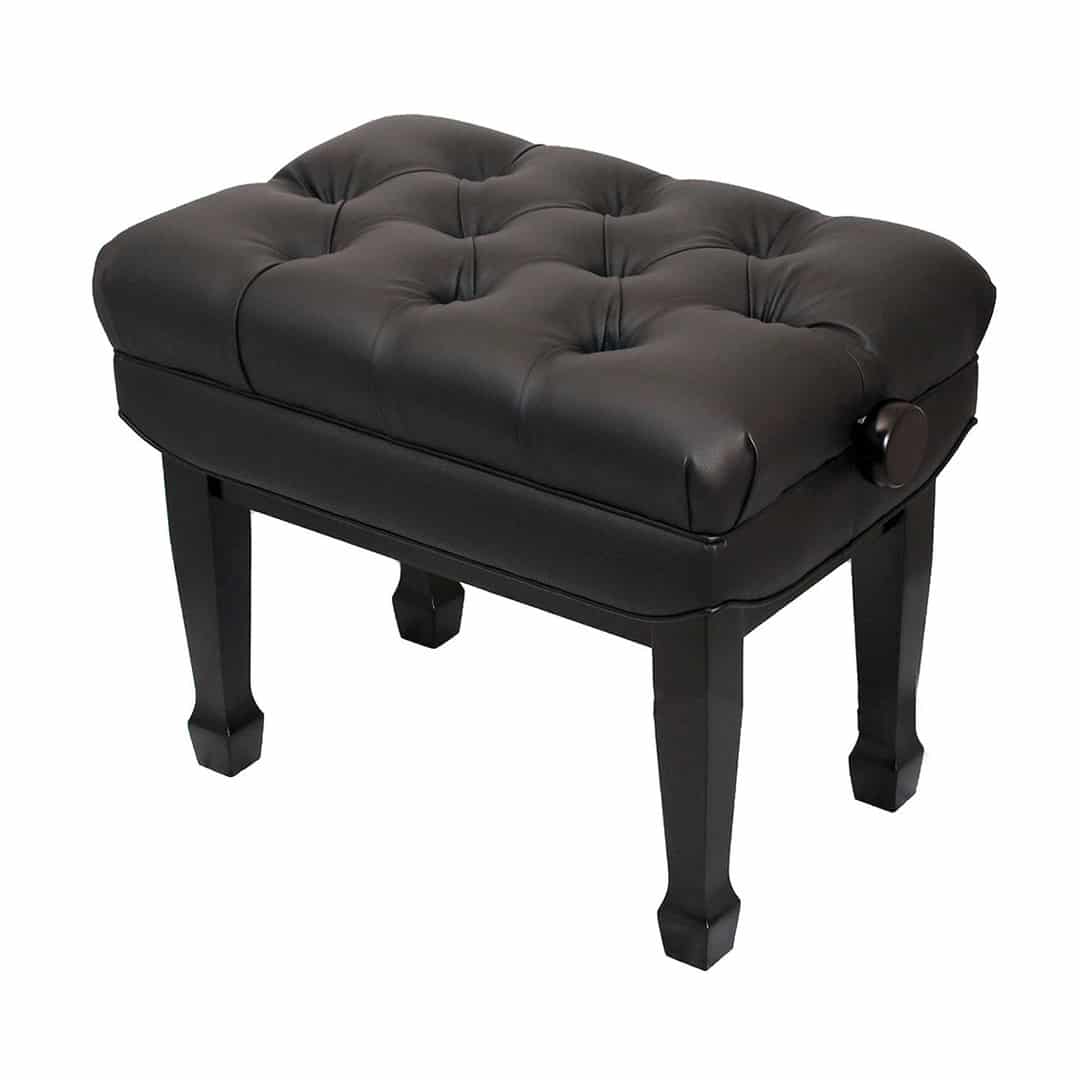
Bench Upgrades
Have multiple players in your home? An adjustable artist bench upgrade will make sure that everyone can play the piano at the most comfortable, best height for them. Also highly recommended for their high weight capacity and comfortable, padded surfaces! Duet benches are extra wide, made for two players to play at once but also perfect if you require a bench with a high weight capacity or just feel more comfortable on an extra wide bench.
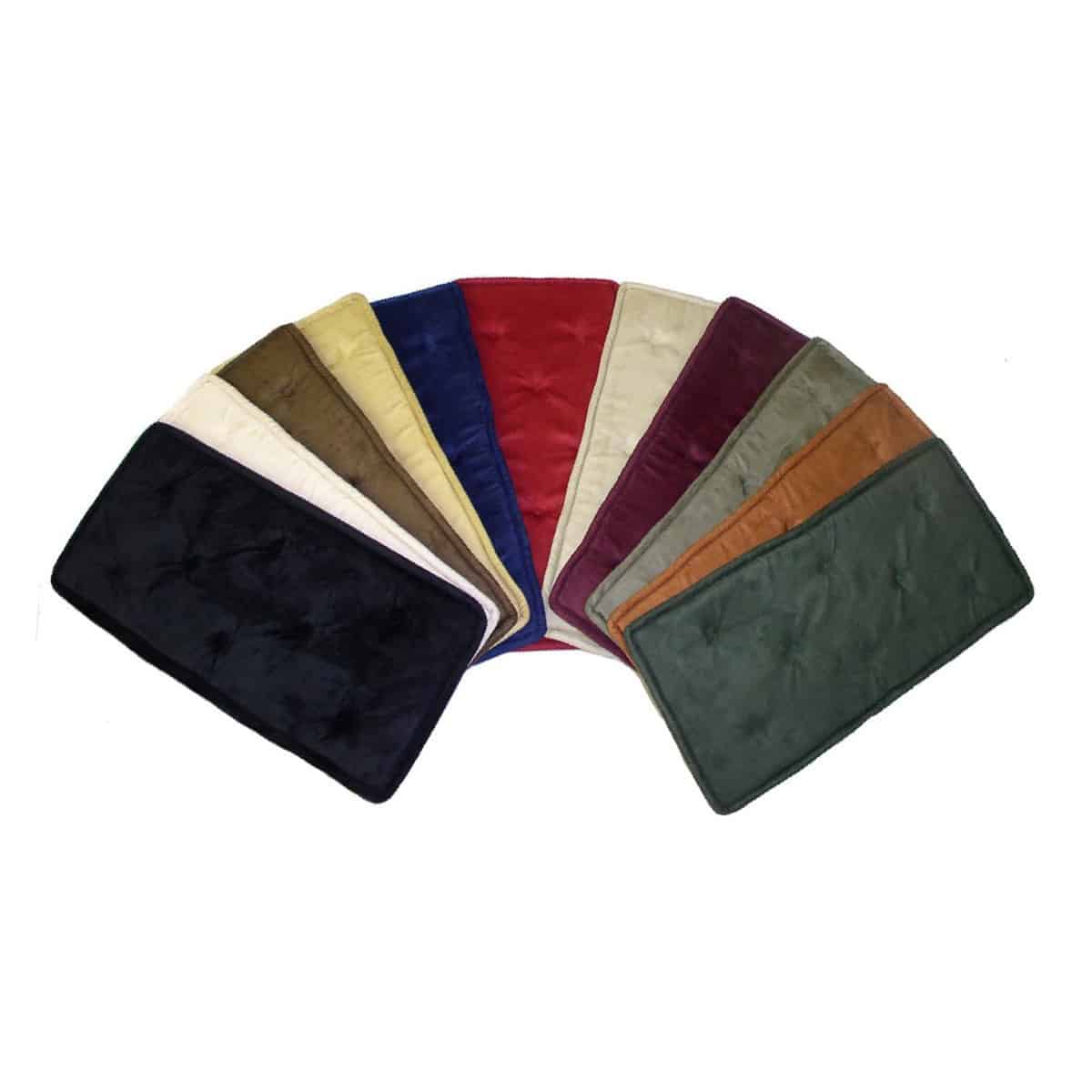
Bench Pads
Especially for pianos that come with a hard-top bench, a bench pad can make for a much more comfortable, luxurious playing experience. The more comfortable it is to play, the more practice you’ll get in on your new piano!
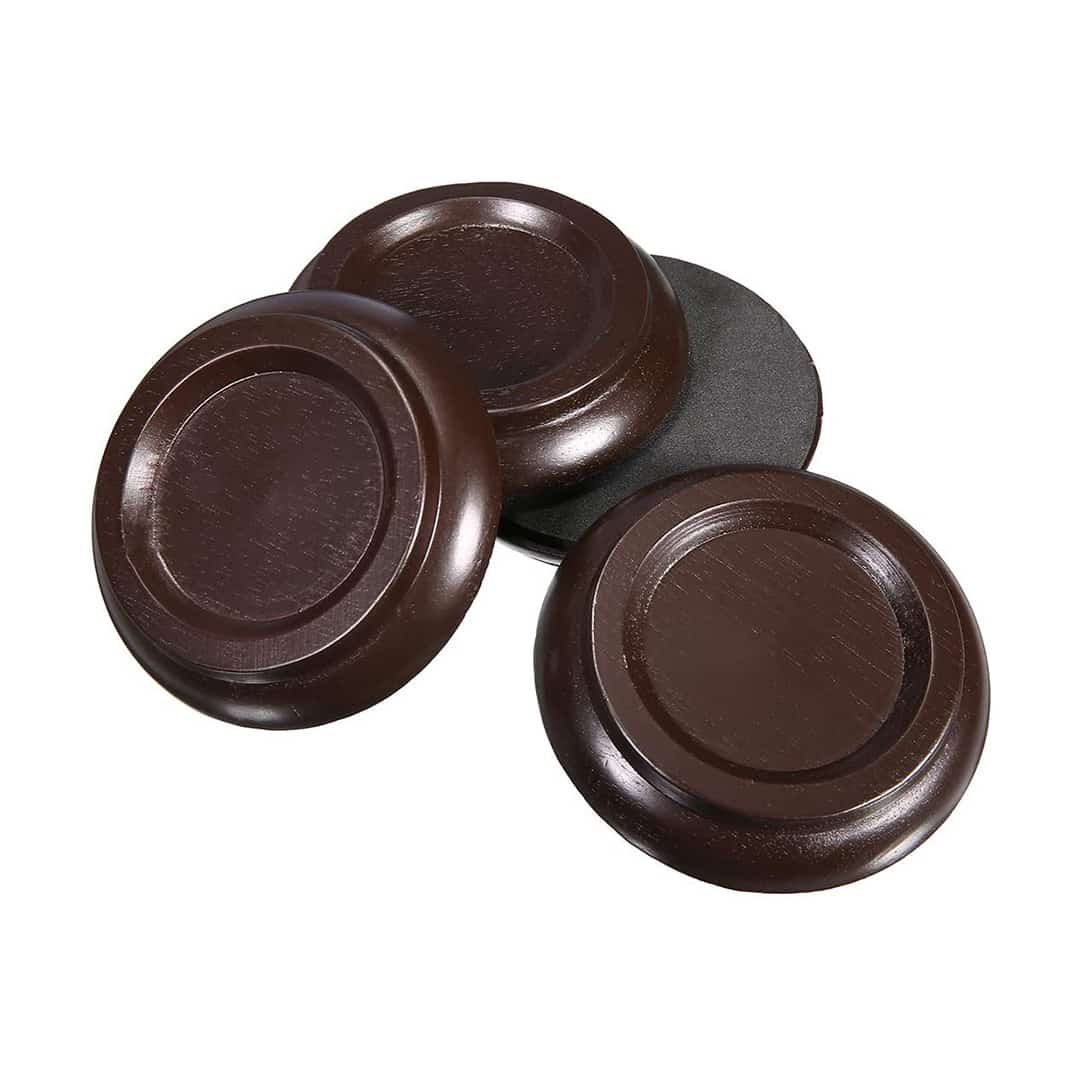
Castor Cups
Pianos can weigh in the vicinity of 500 to 1,000 pounds depending on the size of the instrument. All that weight pressing down on your floors over time can floor sinkage or scratches. Castor cups are an inexpensive solution that will make sure your new piano doesn’t hurt your floors.
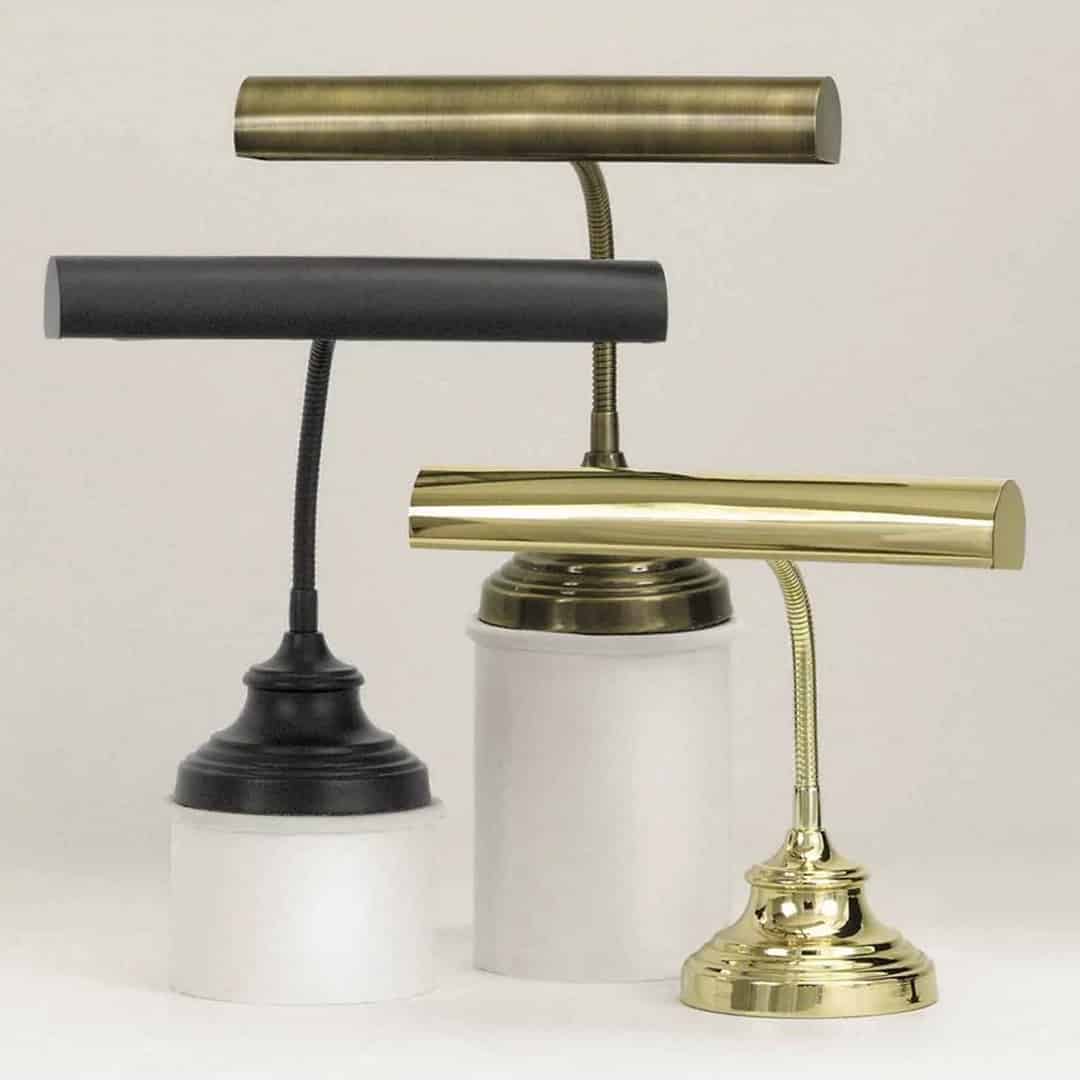
Piano Lamps
Can be ornate or sleek and modern, but always beautiful! If your piano is in a location lacking good lighting or you need additional light to read sheet music, a piano lamp will prove a great investment for you!

Piano Polish
Your new piano is a beautiful piece of furniture as well as a complex machine! Keep it looking as breathtaking as it plays with piano polish, available for both polished and unpolished finishes!
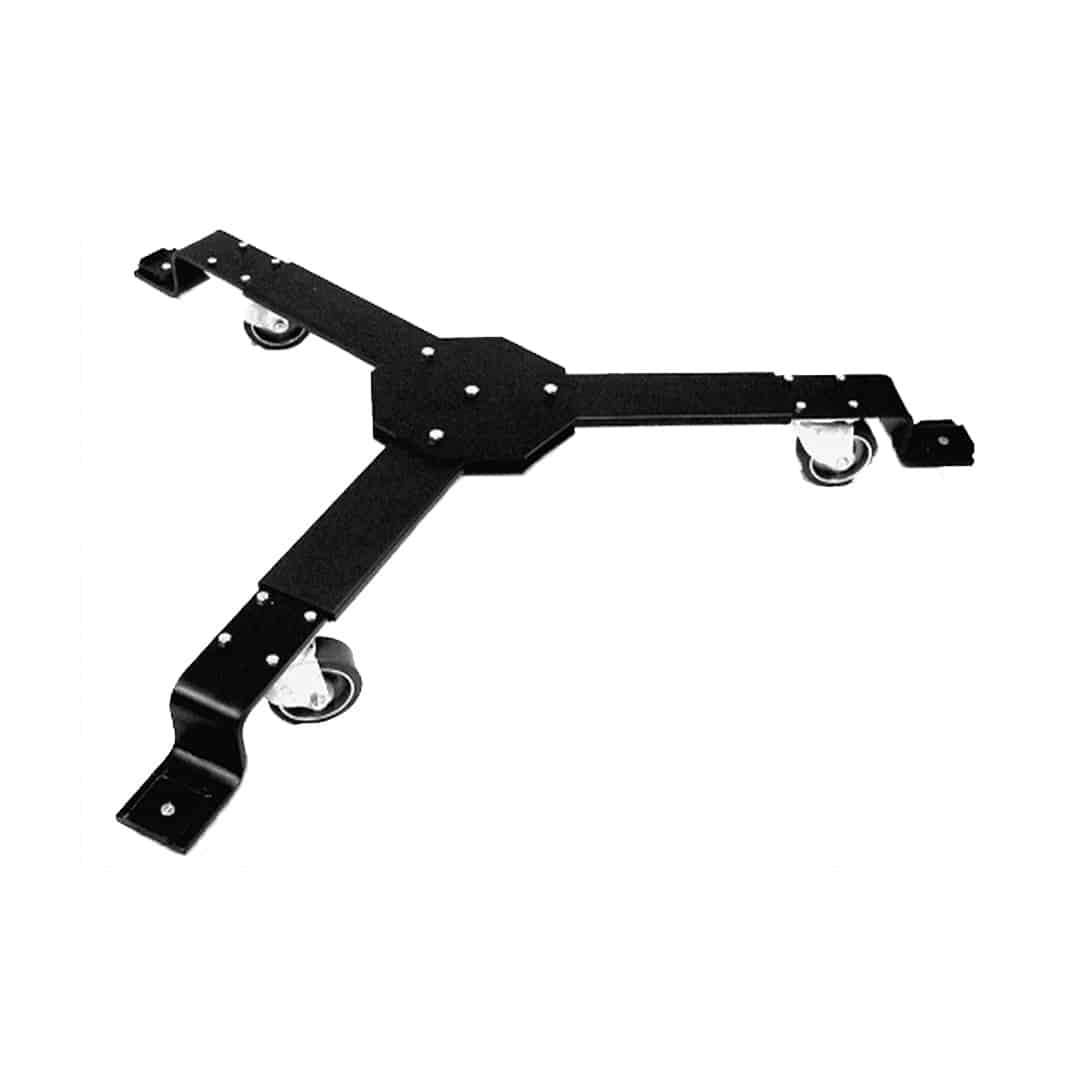
Piano Dollies
Anticipating moving your piano around quite often? For schools, churches, and even homes, piano dollies make moving your piano nearly effortless!

Metronomes
Even with countless metronome apps available for your smartphone, a physical metronome is still the best way to get efficient practice time in without the distracting draw of a phone screen!

Dampp-Chaser System
As mentioned in the maintenance section of this guide, a Dampp-Chaser system can significantly add to the longevity of your piano if it is going to be placed in an area without proper humidity control.
Thanks for reading our Acoustic Piano Buyer’s guide! If you have any questions, comments, or concerns, please don’t hesitate to ask.
Just use this form, or you can also call us at (847) 775-1988 or email us at [email protected].
If you’re in the Chicagoland area, consider visiting one of our locations in Waukegan and Niles. Our two store locations are open from 12 pm to 6 pm, 7 days a week for your convenience!

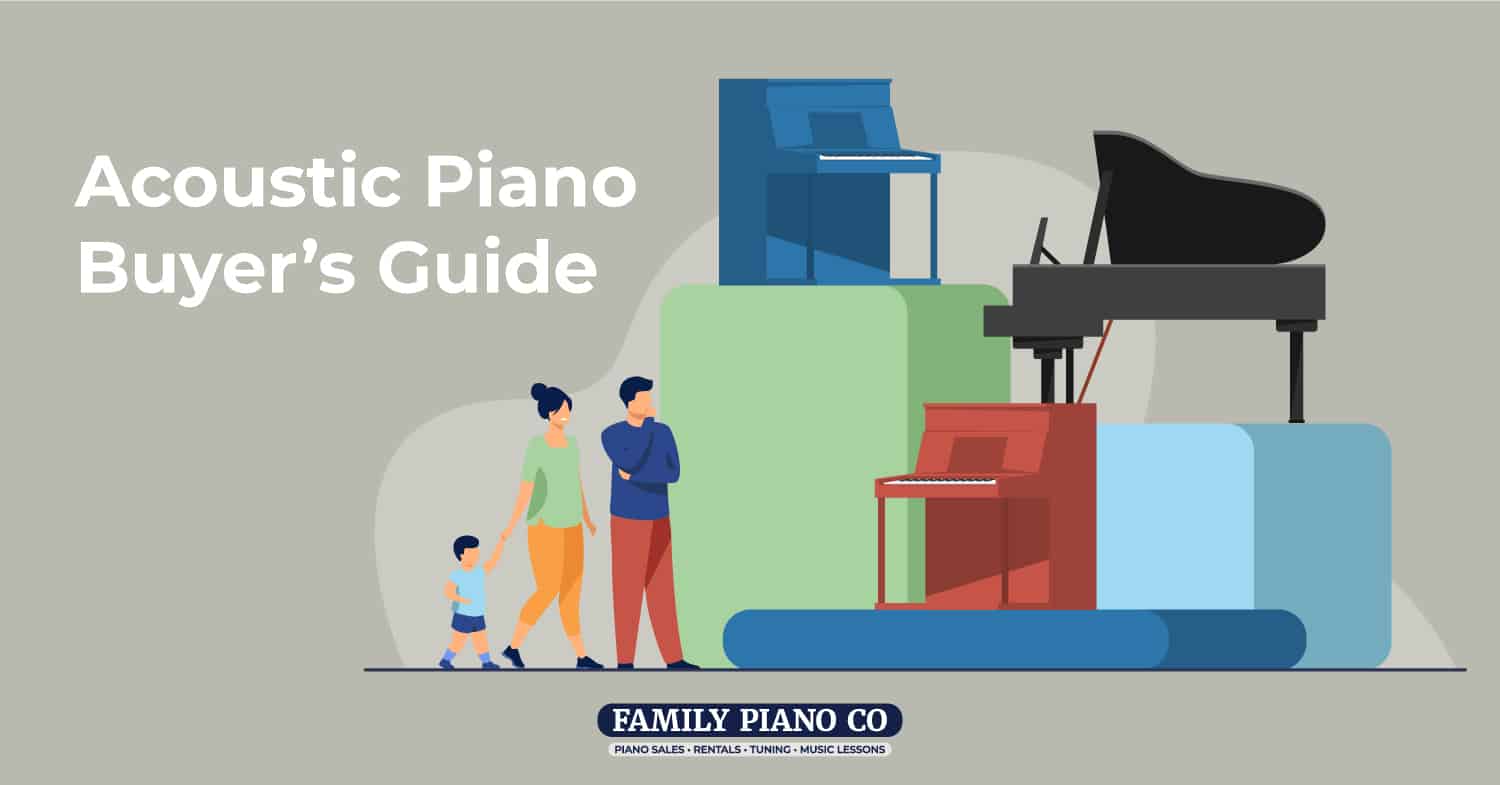
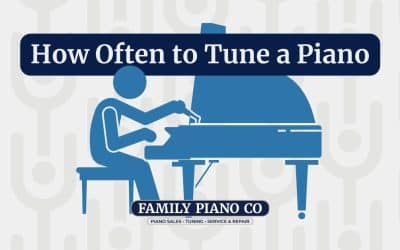


0 Comments